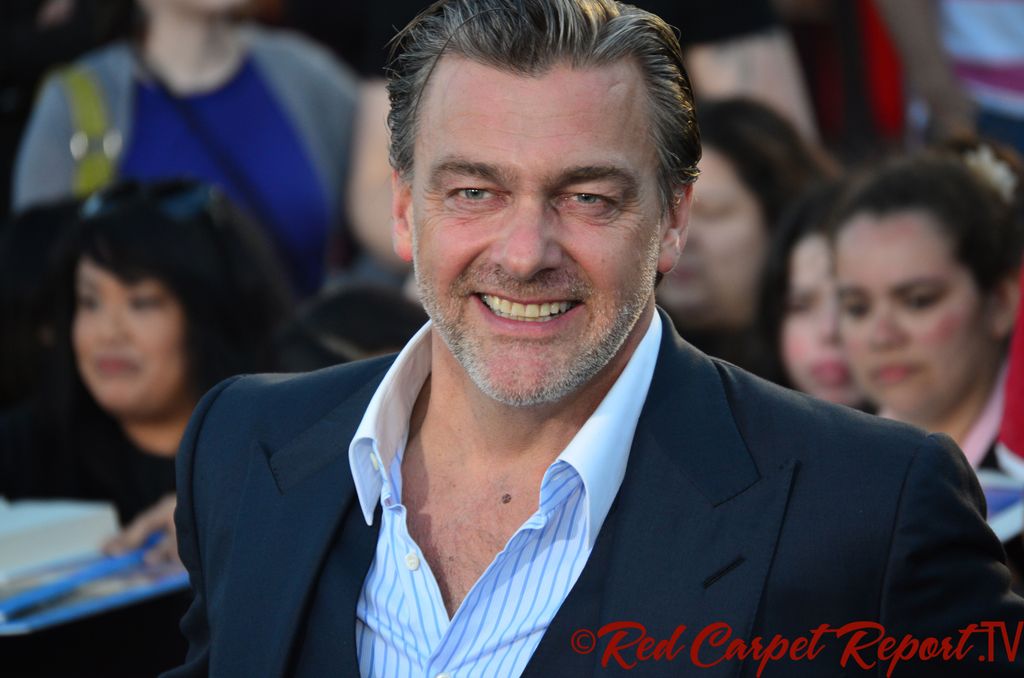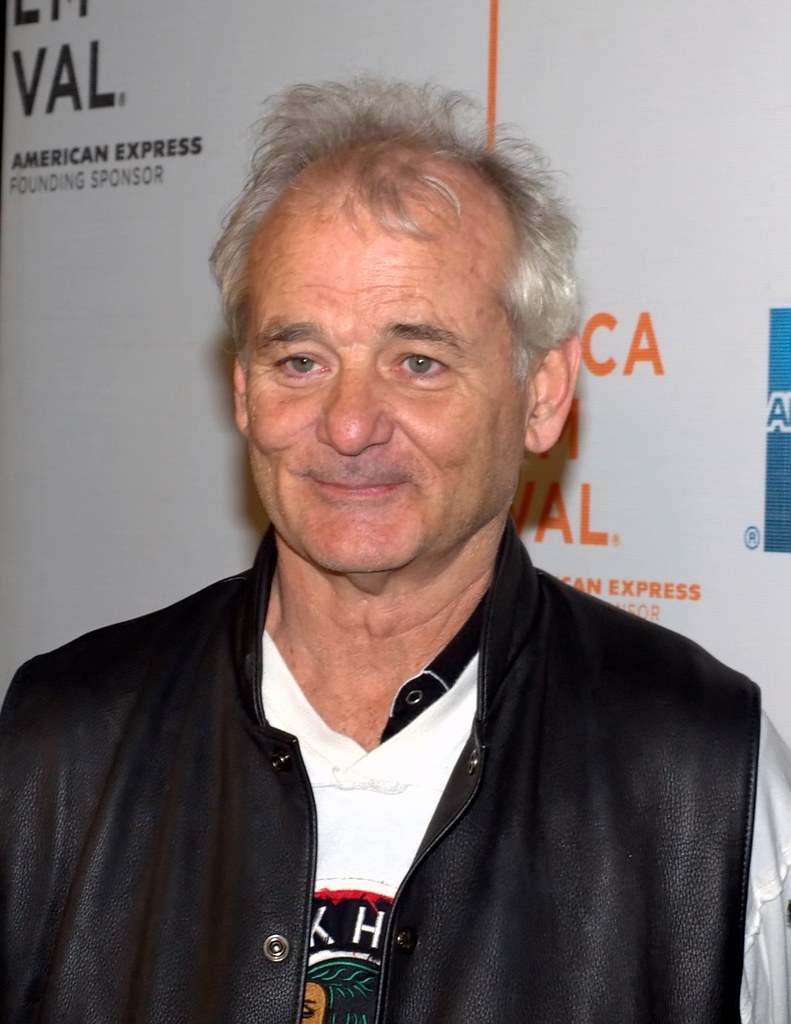
Bill Murray. Just hearing the name probably conjures up images of a beloved, deadpan comedy icon, right? From his legendary early days on “Saturday Night Live” to cult classics like “Ghostbusters” and “Caddyshack,” and his critically acclaimed performances in films like “Lost in Translation,” he’s a Hollywood figure who seems to march to the beat of his own drum, famously operating without an agent and fielding offers via a 1-800 number. He’s often seen as universally embraced, a quirky personality with a hilariously dry delivery that has endeared him to millions.
Yet, as with many stars who achieve such iconic status, there’s often more to the story than meets the eye. While Murray’s public persona is one of an affable, fun-loving guy, recent years have seen a steady stream of unsavory stories emerge, painting a picture of a far darker and more challenging individual than his cinematic work might suggest. These aren’t just whispers; they are detailed accounts from co-stars, directors, producers, and even an ex-wife, describing behavior that ranges from difficult and demanding to outright abusive.
So, if you thought you knew everything about Bill Murray, prepare to have your perceptions challenged. We’re taking a deep dive into the sometimes-shocking encounters and alleged misconduct that have left a number of his colleagues and co-stars saying, quite frankly, they just couldn’t stand him. Get ready for a candid look at the moments that revealed the not-so-charming side of one of Hollywood’s most venerated entertainers.
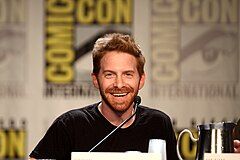
1. **Seth Green: The ‘Trash Can’ Incident**Imagine being a nine-year-old child actor, cast in an exciting “Saturday Night Live” sketch, and running into a comedy legend backstage. For Seth Green, this encounter with Bill Murray was far from a heartwarming anecdote; instead, it became a horrifying memory of an alleged power play gone terribly wrong. Before he was battling vampires in “Buffy the Vampire Slayer” or scheming as Scott Evil in the “Austin Powers” movies, Green was just a kid trying to make his way in showbiz.
Green vividly recalled the incident during an appearance on “Good Mythical Morning.” He was innocently sitting on the arm of a green room chair when Murray, who was hosting that episode, walked in. According to Green, Murray “made a big fuss about me being in his seat.” Green, with youthful defiance, pointed out the absurdity, saying, “I am sitting on the arm of this couch. There are several lengths of this sofa. Kindly eff-off.” Murray, however, was adamant: “That’s my chair.”
What followed was an act that Green described as a harsh lesson in Hollywood hierarchy. Murray allegedly grabbed the young actor by the ankles and flipped him upside down. Green recounted Murray saying, “The trash goes in the trash can.” He was screaming and “flailed wildly” as Murray dangled him over the receptacle. The incident culminated with Murray releasing his grip, sending Green crashing into the trash can.
Green’s reaction was one of pure terror and humiliation. “I was horrified. I ran away, hid under the table in my dressing room and just cried,” he shared. This wasn’t the kind of memorable encounter a child actor dreams of, and it certainly highlights a side of Murray that his fans rarely see, a stark contrast to his often-lovable on-screen characters.

2. **Jennifer Butler: The Damning Divorce Allegations**While public spats with co-stars often grab headlines, the allegations made by Bill Murray’s ex-wife, Jennifer Butler, in her 2008 divorce filing painted an even darker, more intimate picture of the star’s alleged behavior. Butler, a costume designer who had worked on several of Murray’s films, including “Scrooged” and “Groundhog Day,” married him in 1997 after his first divorce. Together, they had four sons, making the subsequent revelations all the more devastating.
As the Associated Press reported, Butler’s characterization of Murray in her divorce filing was a far cry from the charming family man many might imagine. She claimed he was a “prodigious abuser of alcohol and marijuana” and also alleged that he was a ” addict.” This included accusations of “habitual cheating,” regularly having sex with other women when he was away from home. These claims alone would be enough to tarnish a reputation, but Butler’s allegations went further, venturing into deeply disturbing territory.
Infidelity, according to Butler, was not the worst of it. She also alleged that Murray had become violent toward her. She recounted one particularly alarming incident in which she claimed that he “hit her in the face and then told her she was ‘lucky he didn’t kill her’.” Such a chilling accusation reveals a truly troubling side to the comedy legend, one that stands in stark opposition to his public image.
Murray did not comment on Butler’s allegations publicly, though he reportedly paid her a $7 million divorce settlement. Butler passed away in 2021, and her obituary described her as “A proud squeaky wheel who fought the system and flaunted her nonconformity.” This deeply personal account from someone so close to Murray adds a profound weight to the narrative of his alleged difficult behavior, extending beyond professional disagreements into the realm of domestic abuse.
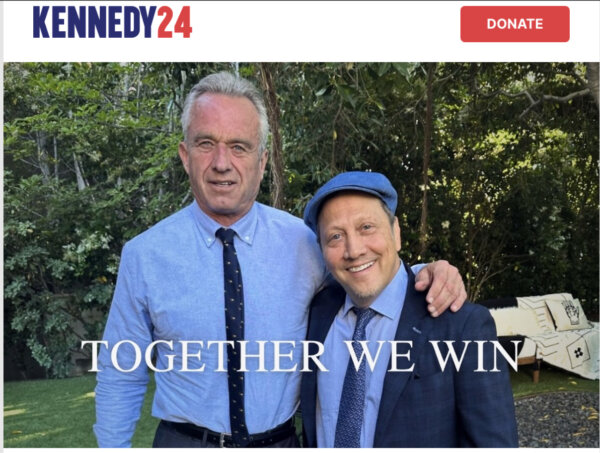
3. **Rob Schneider and the ‘Seething Hate’ for SNL Cast**For many former cast members, returning to host “Saturday Night Live” is a homecoming, a chance to reunite with old friends and mentor new talent. However, when Bill Murray hosted an episode in 1993, his former colleagues and the new generation of “SNL” stars, including Rob Schneider, were met with anything but warmth. Schneider recalled a truly unpleasant experience, stating that Murray “wasn’t very nice to us.”
During a 2022 appearance on SiriusXM’s “The Jim Norton & Sam Roberts Show,” Schneider didn’t mince words, declaring that Murray “hated us on ‘Saturday Night Live’ when he hosted. Absolutely hated us. I mean, seething.” This level of animosity from an “SNL” legend toward the current cast was not only surprising but deeply unsettling for those involved. It wasn’t just a general dislike; it was reportedly a palpable, intense disdain.
According to Schneider, Murray’s disdain was particularly directed at Chris Farley. While Schneider wasn’t entirely sure of the precise reason for this intense dislike, he theorized that Farley’s emulation of John Belushi’s on-the-edge, drug-fueled lifestyle might have disturbed Murray, given Belushi’s tragic passing. It’s a plausible theory, offering a glimpse into the potential complexities behind Murray’s alleged anger, even if it remains Schneider’s interpretation.
Schneider also mentioned that Murray “hated Sandler too,” though again, the reason remained unclear. All in all, Murray’s week on the show was remembered as an uncomfortable ordeal for the entire cast. Schneider, ever the comedian, even found a silver lining in the situation, quipping, “The least of the hate was to me [and] I took great pleasure in that he hated me less, because he’s my hero.” It underscores the extent of the discomfort that even a slight reduction in Murray’s alleged hatred was a source of relief.
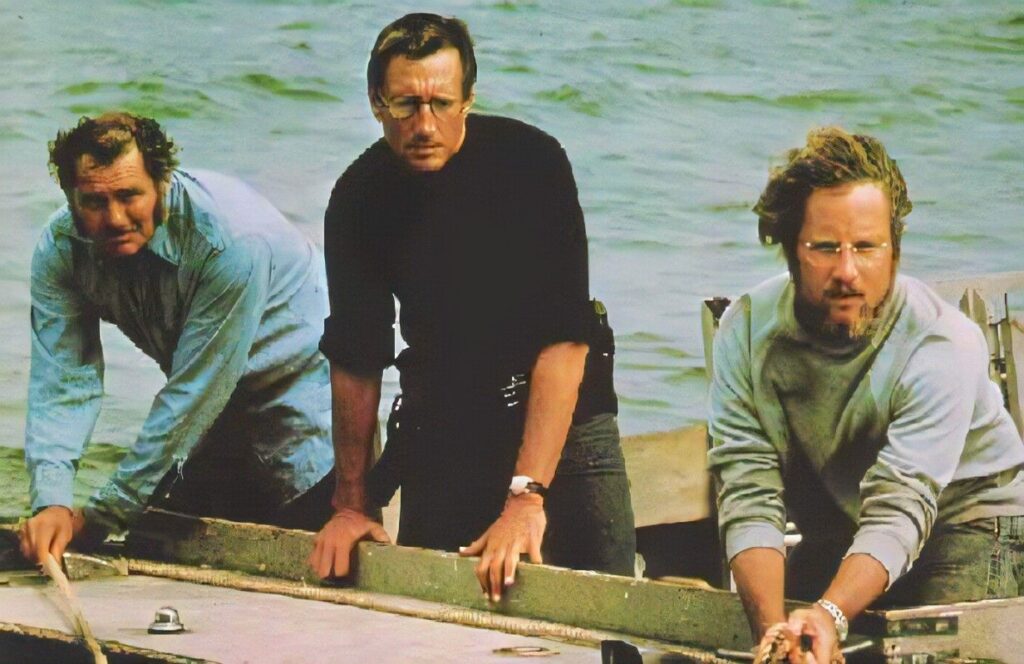
4. **Richard Dreyfuss: A ‘Drunken Bully’ and a Thrown Ashtray**The 1991 comedy “What About Bob?” brought together Bill Murray and “Jaws” alum Richard Dreyfuss in a story about a psychiatric patient driving his shrink to the brink. While their on-screen dynamic was built on an annoying clinginess leading to fury, their off-screen relationship proved to be equally fraught, if not more so. Murray himself acknowledged their lack of camaraderie, telling Entertainment Weekly in 1993, “[Richard Dreyfuss and I] didn’t get along on the movie particularly, but it worked for the movie.” He even suggested he drove Dreyfuss nuts, and Dreyfuss “encouraged me to drive him nuts.”
However, Dreyfuss’s account, decades later, painted a much darker picture than Murray’s somewhat playful characterization. Speaking with Yahoo! Entertainment in 2019, Dreyfuss candidly described Murray’s behavior as that of an “Irish drunken bully.” He recounted a particularly nasty incident when Murray, allegedly having had a few cocktails, returned from dinner. Dreyfuss attempted to show him a script change he believed would make a scene funnier.
Murray’s reaction was explosive. “He put his face next to me, nose-to-nose. And he screamed at the top of his lungs, ‘Everyone hates you! You are tolerated!'” Dreyfuss recalled. This verbal assault was reportedly only the beginning. Murray then allegedly followed up by hurling a heavy glass ashtray at his co-star. “He threw it at my face,” Dreyfuss said, noting its substantial weight of “about three-quarters of a pound.” Fortunately, Murray missed.
“I got up and left,” Dreyfuss concluded. While Murray, in a 1991 interview with Deseret News, later suggested he intentionally tried to get under Dreyfuss’s skin as a form of method acting, claiming he “made it all up” (the crowding, screaming in his ear, and annoying behavior), Dreyfuss’s chilling recollection of a thrown ashtray transcends mere acting choices, painting a picture of alleged aggression and bullying that left a lasting impact.

5. **Laura Ziskin: The Lake Toss and Broken Sunglasses**It wasn’t just co-stars who found themselves on the receiving end of Bill Murray’s alleged difficult behavior during the filming of “What About Bob?”; the movie’s producer, Laura Ziskin, also had a harrowing experience. Ziskin, who tragically passed away in 2011, openly detailed her interactions with Murray in a 1993 interview with the Los Angeles Times, where she was among several individuals who shared stories of the star’s alleged misconduct.
Ziskin recalled a discussion with Murray that quickly escalated from a disagreement into a full-blown fight. The confrontation culminated in a truly shocking act: Murray allegedly ended the discussion by throwing a “fully clothed Ziskin off a dock and into a lake.” This physical assault, occurring during a professional disagreement, speaks volumes about the alleged intensity and volatility of Murray’s temper on set.
Beyond the unexpected dunking, Ziskin also reported the threat of further physical violence. She told the Times, “Bill also threatened to throw me across the parking lot and then broke my sunglasses and threw them across the parking lot.” Her reaction was one of justifiable outrage. “I was furious and outraged at the time,” she stated, adding a professional assessment: “but having produced a dozen movies, I can safely say it is not common behavior.” Her words underscore the extraordinary nature of Murray’s alleged actions.
Frank Oz, the director of “What About Bob?”, also openly admitted that making the movie was something of a nightmare, describing it as “incredibly difficult, incredibly full of tension” in a 2007 interview with Ain’t It Cool News. While Oz later insisted to IGN that Murray wasn’t the sole troublemaker, stating “everybody had their own viewpoint on how to make the movie better,” Ziskin’s specific and alarming account remains a powerful testament to the challenges of working with the actor.
.jpg/500px-Geena_Davis_2013_(cropped).jpg)
6. **Geena Davis: Unwanted Massages and Public Shaming**Geena Davis, a star known for her roles in films like “Thelma & Louise,” co-starred with Bill Murray in the 1990 heist comedy “Quick Change,” which Murray also co-directed. While Murray jokingly called it “The most fun movie experience I’ve ever had — until the release” to Entertainment Weekly, Davis’s experience was anything but fun, revealing alleged patterns of inappropriate and humiliating behavior.
Davis recounted a particularly uncomfortable meeting in a hotel suite to discuss the film’s script. During this meeting, Murray allegedly derailed the professional discussion with “his tenacious attempts to use a portable massage gadget on her.” Davis made it clear she didn’t want the massage. “I said no multiple times, but he wouldn’t relent,” she wrote in an excerpt from her 2022 memoir, “Dying of Politeness: A Memoir,” which she shared with People.
Her account highlighted the power dynamics at play and the lack of support she received, noting, “I would have had to yell at him and cause a scene if I was to get him to give up trying to force me to do it; the other men in the room did nothing to make it stop.” This silent complicity by others only compounded the discomfort and pressure she felt during the alleged incident.
Davis also alleged that Murray later angrily reprimanded her in front of hundreds of bystanders while filming on location. She told People that sharing her recollections was not a betrayal, stating, “I figure it’s sort of rather universally known that he could be difficult to work with.” This public shaming, combined with the earlier unwanted physical advances, permanently altered Davis’s perception of Murray. As she mused to Vanity Fair, while he could often be “an affable, fun-loving guy,” once she had that experience “on day one of the movie, then everything about him after that was completely colored by knowing what lurks within.”
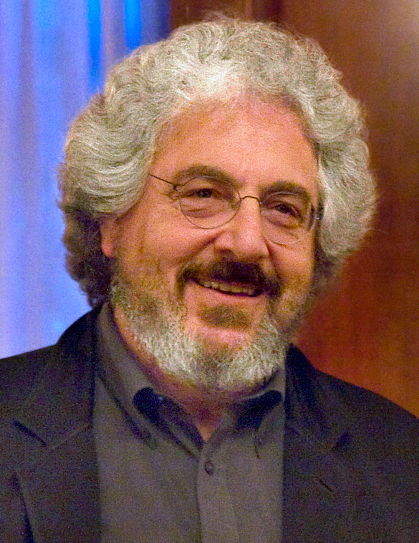
7. **Harold Ramis: The Friendship That Fractured**For years, Bill Murray and Harold Ramis were the epitome of a comedic dream team. Their collaboration began at Chicago’s legendary Second City in the early 1970s, blossoming into a deep friendship and a string of iconic screen partnerships. Ramis directed and co-wrote “Caddyshack,” they starred together in “Stripes,” and of course, they were both integral to the phenomenon of the two “Ghostbusters” movies. Their creative synergy seemed unstoppable, culminating in what many consider one of their finest works: “Groundhog Day.”
However, the making of “Groundhog Day” proved to be anything but a harmonious collaboration. Despite its eventual critical and commercial triumph, the production was plagued by frequent clashes between Ramis and Murray. These disagreements stemmed from various creative aspects of the film, and they weren’t just minor artistic differences. Murray, known for his famously mercurial nature, wasn’t just sparring with his friend and director; he was also reportedly butting heads with studio executives.
In a move that perfectly illustrates Murray’s unique approach to conflict, when studio execs requested he hire an assistant to serve as a middleman for communication, he did just that. The catch? The person he hired was both deaf and nonverbal, communicating solely through American Sign Language, which Murray promised to learn. Ramis, understandably exasperated, described this as “anti-communication,” feeling that Murray was deliberately creating barriers. The simmering feud reached its boiling point during one particularly heated discussion when the director, pushed to his limit, reportedly grabbed Murray’s shirt and threw him against a wall.
Following this intense physical altercation, Murray completely ceased speaking to Ramis. The silence was deafening, and the personal toll immense. Harold Ramis’s daughter, Violet Ramis Stiel, chronicled the heartbreak in her 2018 book, “Ghostbuster’s Daughter: Life with My Dad, Harold Ramis,” noting that her father was “heartbroken, confused and yet unsurprised by the rejection.” It was a tragic end to a cherished friendship, leaving a void for years.
In a poignant turn of events, not long before Ramis’s death in 2014, Murray finally reached out, visiting his old friend to mend fences. This act of reconciliation, after years of silence, offered a glimmer of hope that perhaps, beneath the difficult exterior, the bond forged decades earlier still held some weight. It’s a testament to the complicated nature of relationships in Hollywood, where creative passion can both unite and divide, but sometimes, compassion can ultimately prevail.

8. **Lucy Liu: Standing Up to the Insults**When “Charlie’s Angels” hit the big screen, it was an undeniable pop culture moment, bringing together three powerhouse women. However, behind the scenes, one of the film’s stars, Lucy Liu, was allegedly enduring a deeply unpleasant experience with co-star Bill Murray. Rumors of acrimony between Liu and Murray were persistent for years, seemingly confirmed when Murray was notably absent from the sequel, with comedian Bernie Mac stepping in as his replacement.
Liu herself finally addressed the long-standing whispers during an appearance on the Los Angeles Times’ “Asian Enough” podcast. She didn’t hold back, confirming that they had indeed clashed, and recounted a specific incident that left a lasting impression. While they were rehearsing a scene, which Murray had reportedly rewritten without informing anyone, things took a sharp turn for the worse.
“As we’re doing the scene, Bill starts to sort of hurl insults, and I won’t get into the specifics, but it kept going on and on,” Liu revealed. The situation was particularly unsettling because, as she perceived it, Murray seemed to be looking straight at her, making the personal nature of the attack undeniable. Uncertain but unwilling to let it slide, Liu directly confronted him. “I was, like, ‘Wow, he seems like he’s looking straight at me’,” she remembered, adding, “I say, ‘I’m so sorry. Are you talking to me?’— and clearly he was, because then it started to become a one-on-one communication.”
What followed was a moment of powerful self-advocacy. Liu, facing a seasoned star, refused to back down. “Some of the language was inexcusable and unacceptable, and I was not going to just sit there and take it,” she asserted. “So, yes, I stood up for myself, and I don’t regret it.” Her “Charlie’s Angels” co-star, Drew Barrymore, later corroborated Liu’s account during an episode of “The Drew Barrymore Show.” Barrymore explained, “So what really happened was Bill was just in a — you know, comedians can be a little dark sometimes, and he just came in in a bad mood.”
Barrymore’s perspective, while acknowledging Murray’s mood, ultimately highlighted Liu’s strength. She emphasized, “And what you have to know is how much Lucy stood up for herself and that was the great thing that came out of an unfortunate circumstance.” Liu’s willingness to speak out, even years later, sheds light on the challenges many face in Hollywood and serves as an inspiring example of courage in the face of alleged workplace bullying.
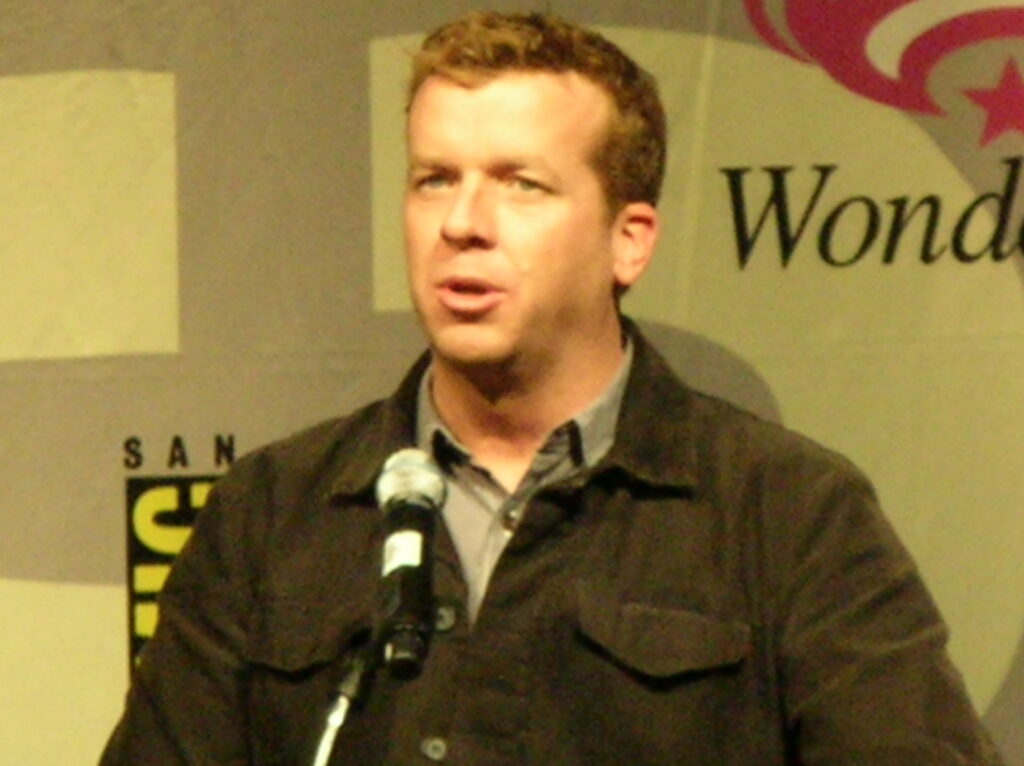
9. **Director McG: A Head-Butt or an Active Imagination?**Lucy Liu wasn’t the only one on the set of “Charlie’s Angels” who reportedly felt the brunt of Bill Murray’s temper. Director McG, whose real name is Joseph McGinty Nichol, made his feature directorial debut with the film, transitioning from a successful career directing music videos for bands like Korn and The Offspring. His experience with Murray, however, would become a widely discussed and hotly debated incident, raising questions about what really happened behind the scenes.
In a revealing 2009 interview with The Guardian, McG claimed that he often found himself in physical altercations with the stars of his movies. He made a rather shocking confession, stating, “I mean, I’ve been head-butted by an A-list star. Square in the head. An inch later and my nose would have been obliterated.” When pressed to name the perpetrator of this alleged assault, McG initially hesitated, saying, “Nah, I probably shouldn’t.” However, he eventually gave in, dropping the name: “But it was Bill Murray.”
This was a serious accusation, one that painted a vivid picture of alleged aggression. A director claiming to have been physically attacked by one of his lead actors is certainly not a common occurrence in Hollywood, and McG’s account quickly made headlines. It suggested a level of volatility from Murray that went beyond mere creative differences or a bad mood, implying a significant breakdown in professional conduct.
However, Murray himself had a completely different take on the allegation. When asked about McG’s story in a 2009 interview with The Times, the actor vehemently denied it. “That’s bulls***!” Murray insisted, mincing no words. “That’s complete crap. I don’t know why he made that story up. He has a very active imagination.” Murray’s denial casts a shadow of doubt on McG’s claims, leaving the public to wonder which version of events truly transpired.
The stark contrast between their accounts makes the alleged incident even more intriguing. Was it a moment of alleged physical violence that McG bravely brought to light, or was it, as Murray suggested, a fabrication born from an overly “active imagination”? Regardless of the truth, the story became another piece in the growing puzzle of Bill Murray’s alleged difficult reputation, adding to the lore of his unpredictable and sometimes confrontational interactions on set. It certainly gave fans something to chew on!

10. **Anjelica Huston: The Dinner Party Snub**Bill Murray’s association with director Wes Anderson is one of the most enduring and beloved collaborations in modern cinema, with Murray appearing in nearly all of Anderson’s films since 1998’s “Rushmore.” Among his frequent co-stars in the Wes Anderson universe is the magnificent Anjelica Huston, who shared the screen with Murray in acclaimed features like “The Royal Tenenbaums” and “The Life Aquatic with Steve Zissou.” In “The Life Aquatic,” Huston played Eleanor Zissou, the wife of Murray’s titular character, an eccentric oceanographer.
Despite their professional proximity in these quirky, beloved films, Huston’s personal experience working with Murray was not always harmonious. She candidly reflected on their interactions during a 2019 interview with Vulture, revealing a particularly jarring incident during the production of “The Life Aquatic.” “He was a s*** to me on ‘Life Aquatic’,” Huston bluntly stated, leaving no room for ambiguity about her feelings on his behavior.
The incident she recounted took place during their first week of filming in Italy. “The first week I was there, we were all in this little hotel, and he invited the entire cast to go and have dinner, except me,” she claimed. Imagine being part of a close-knit film family, staying in the same hotel, and then being pointedly excluded from a group dinner by your co-star. The subtle cruelty of such a snub is often more cutting than an overt confrontation.
Huston noted that the rest of the cast seemed to feel the awkwardness of the situation. Everyone “came down for dinner, a little dog-faced about my not being invited, and they were all like, ‘Oh, you know, we don’t really want to go. That was worse than anything.” This observation highlights the collective discomfort and the ripple effect Murray’s alleged behavior had on the entire cast, making the atmosphere tense and unpleasant for everyone involved.
While this incident painted a clear picture of Murray’s alleged negative side, Huston also acknowledged the complexity of his character, noting that his behavior could be erratic and wasn’t always terrible. In a touching counterpoint, she shared, “He showed up at my husband’s funeral.” She added, “He couldn’t have been nicer that day. He showed up. A lot of people didn’t.” This contrast underscores the unpredictable nature of Murray’s interactions, capable of both deep insensitivity and surprising acts of kindness, leaving those around him on an emotional rollercoaster.
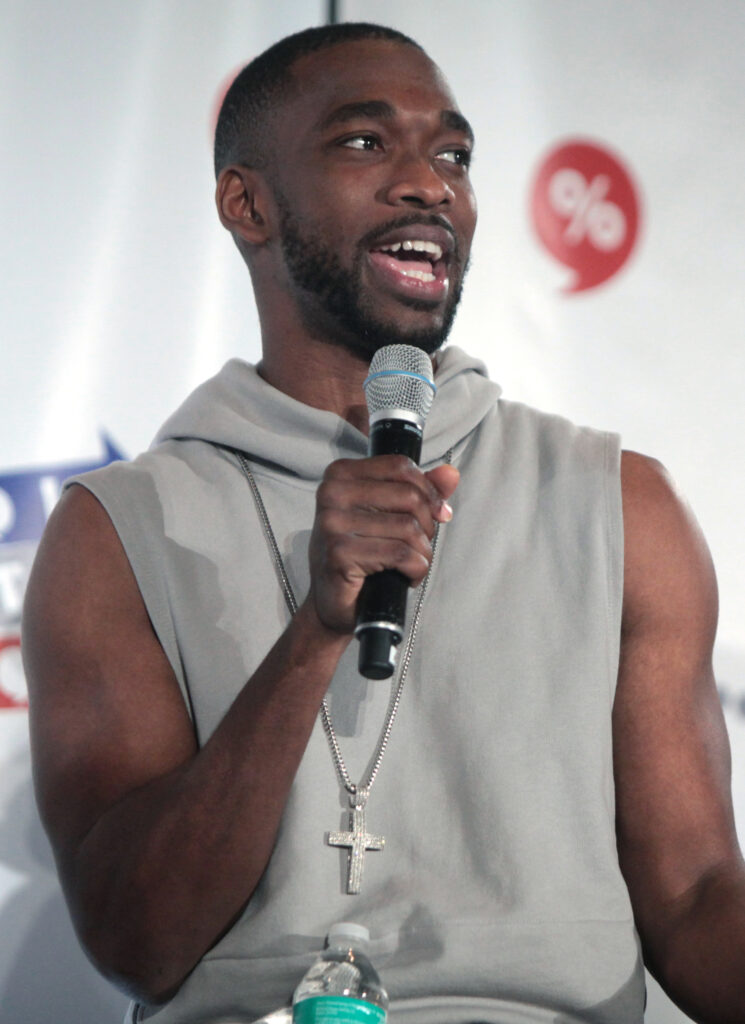
11. **Jay Pharoah: The Backstage ‘Samoan Drop’**”Saturday Night Live” has always been a place where comedic legends are made, and sometimes, where legends clash. Jay Pharoah, a former cast member, has a truly wild story about an encounter with Bill Murray that went from vaguely complimentary to outright physical during one of the show’s infamous all-night writing sessions. The ironic twist? Murray wasn’t even hosting that particular week, making his presence and subsequent behavior even more peculiar.
Pharoah recounted the bizarre incident during an appearance on “Club Shay Shay.” He remembered Murray approaching him, initially with what seemed like a thoughtful observation. “Bill Murray looks at me, he goes, ‘I know your work. There’s something about you you’re not showing the world’,” Pharoah recalled. This seemed like the start of a deep, sentimental conversation, a moment of mentorship from an icon. But with Murray, things can change in an instant, and they certainly did here.
“It immediately switches, like 15 seconds later,” Pharoah continued, detailing the rapid shift. Murray allegedly then yelled, “Come here, fat boy!” — a remark that Pharoah found particularly baffling given his physique at the time, stating, “I was one of the most built people on the show.” What followed was an alleged physical assault: “He calls me fat boy, then he gets on me, he starts hitting me … in the same place, over and over again.”
While Pharoah clarified that the initial hits weren’t particularly hard, Murray’s relentless persistence in striking the same spot eventually made it painful. This repeated, unwanted contact pushed Pharoah to his limit. “So as soon as it started stinging, I said, ‘Okay, I gotta drop him.’ So I picked him up and I Samoan-dropped him on the sofa.'” It was a dramatic move, a wrestling maneuver executed to stop the alleged assault.
Even after being body-slammed onto the couch, Murray reportedly wasn’t deterred. “He was still trying to fight me,” Pharoah marveled, illustrating the intense and seemingly irrational nature of Murray’s alleged behavior. Pharoah ultimately speculated that Murray was “Drunk out of his mind, no recollection, probably, of this whatsoever,” casting the entire incident as a regrettable consequence of intoxication and memory loss from the comedy legend. It’s certainly a unique “SNL” anecdote!
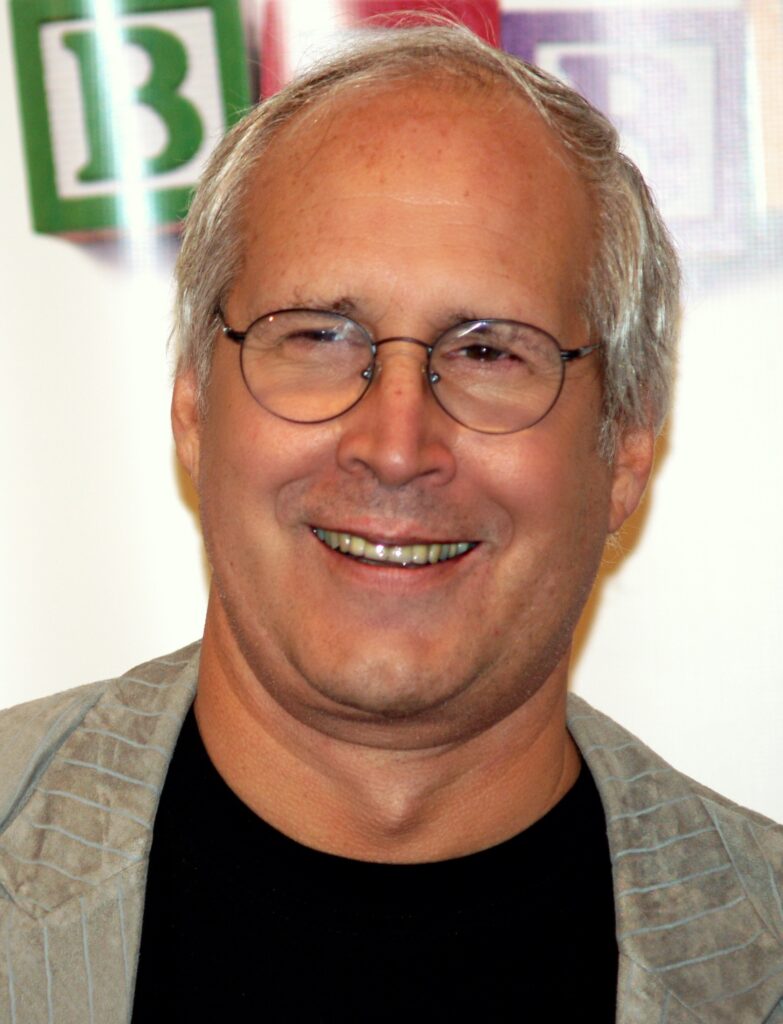
12. **Chevy Chase: The Legendary Backstage Brawl**Before Bill Murray cemented his status as an “SNL” icon, there was Chevy Chase, the original breakout star of the show’s inaugural season. Chase’s departure midway through the second season, followed by his return to host in the third, sparked a level of animosity backstage that would become the stuff of legend. Reportedly, Chase was “loathed by his former co-stars,” and Bill Murray, who had joined as Chase’s replacement, was said to be “particularly displeased.”
The tension between the two comedic titans escalated throughout the week, fueled by a series of verbal barbs. As detailed in “Saturday Night: A Backstage History of Saturday Night Live,” the simmering feud reached its boiling point just five minutes before the show was about to go live. It was then that the insults reportedly ceased, and the punches began to fly, marking a now-legendary backstage fistfight between the two stars.
Decades later, Chase offered his perspective on the altercation during an interview with Time, suggesting an external catalyst. “I discovered later it was with the instigation of John Belushi, who apparently was a little bit jealous that I had become the standout guy the first year, when John [felt he] deserved to,” Chase recalled. This adds a layer of complexity, implying that Belushi might have fanned the flames of an already tense situation.
Murray, for his part, also looked back on their brief battle in an interview with Empire, though he seemed to downplay its significance with the passage of time. He insisted it was “really a Hollywood fight, a ‘Don’t touch my face!’ kind of thing,” and remembered his brother, Brian Doyle-Murray, stepping in to break things up. “So it was kind of a non-event,” Murray concluded, aiming to diminish the gravity of the incident.
Despite the intensity of the alleged brawl, Murray insisted that he and Chase had gotten over it. Proving his point, just a few years later, the pair even co-starred in the classic golf comedy “Caddyshack.” While the “non-event” claim might be up for debate, the fact that they could work together again speaks to the complicated and often forgiving nature of professional relationships in Hollywood, even after a literal punch-up backstage.
**The Complicated Legacy of a Comedy Icon**
Read more about: Hollywood’s Unforgettable Feuds and Political Firestorms: Diving Deep into the Stars Who Sparked Outrage and Division
From these revealing accounts, a complex and often contradictory picture of Bill Murray emerges. He is undoubtedly a generational talent, a comedic genius whose work has brought joy and laughter to millions. Yet, the narratives from those who have worked closely with him paint a portrait of a man capable of immense charm and surprising cruelty, of a beloved figure whose off-screen behavior has left a trail of alleged difficult encounters, fractured friendships, and lasting hurt. Whether these incidents stem from creative intensity, personal demons, or an unchecked ego, they undeniable add a profound, often uncomfortable, layer to the legacy of one of Hollywood’s most enigmatic and celebrated stars. For his fans, it’s a sobering reminder that even our heroes are, at the end of the day, complex human beings, full of contradictions and often, more than a few hidden layers.



